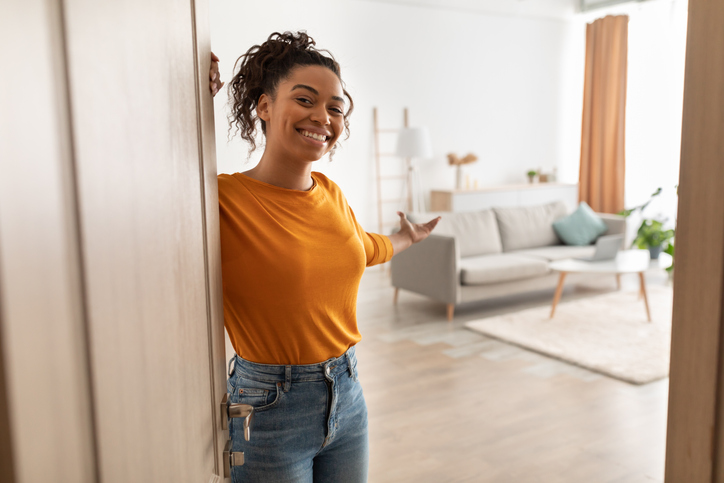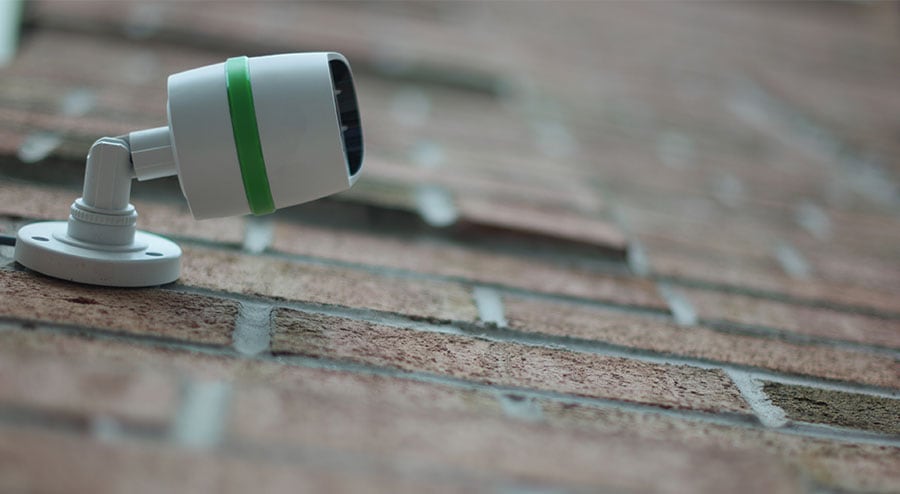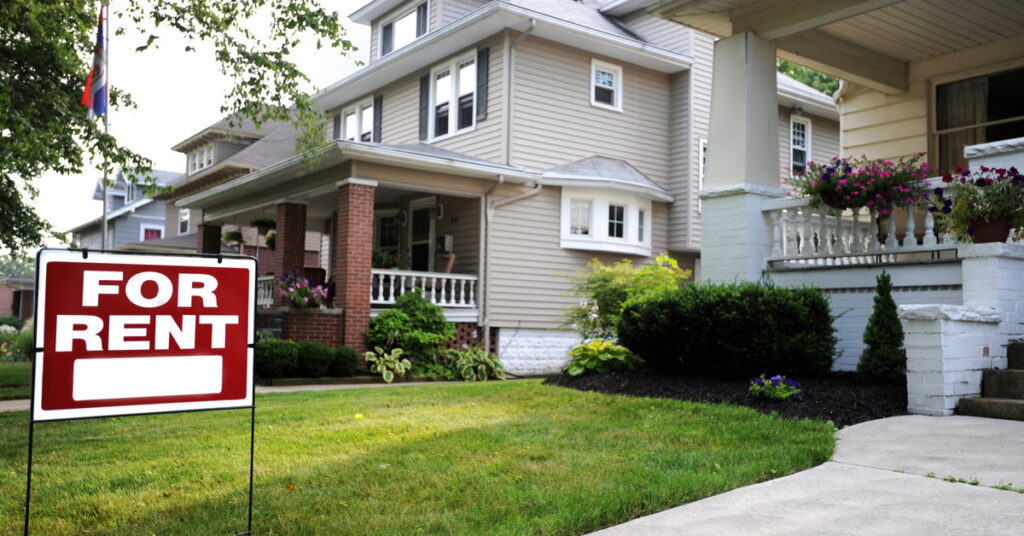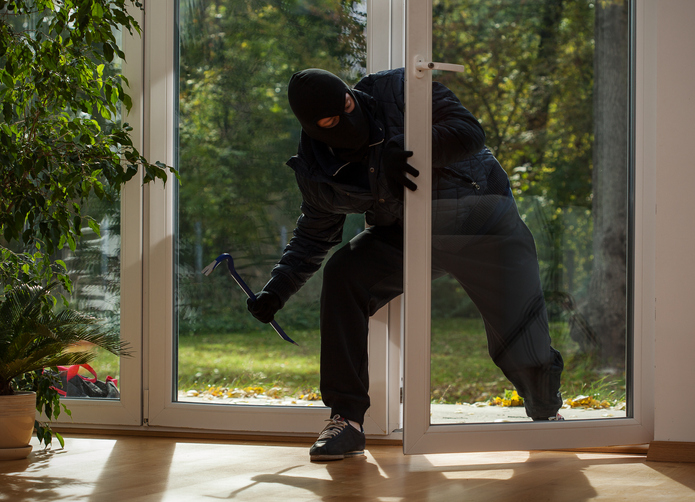Ensuring personal safety and safeguarding one’s living space is of paramount importance, especially when living alone. In this article, we will explore a range of personal safety measures designed to empower single individuals with the knowledge and tools they need to create a secure environment. From practical advice on self-defense techniques to reinforcing doors and windows, and from choosing safe neighborhoods to implementing digital security measures, this guide covers all aspects of home security. Whether you’re a single occupant living in an apartment, condo, or house, these home security tips will equip you with the confidence and preparedness to navigate your daily life with peace of mind.

Home Security Devices And Measures
Living alone can leave individuals feeling more vulnerable to security threats, making it crucial for single occupants to invest in essential home security devices. Smart locks, security cameras, and video doorbells are specifically designed to enhance security and provide peace of mind for those living alone.
Table of Contents
- Home Security Devices And Measures
- Reinforcing Doors And Windows
- Deterrents For Intruders
- Visible Security Measures
- Choosing A Safe Neighborhood
- Resources For Checking Crime Rates And Community Involvement
- Handling Unexpected Visitors
- Self-Defense Techniques For Single Occupants
- Verifying Individuals Before Allowing Entry
- Securing Your Home When Traveling
- Digital Security Measures
- Conclusion
One of the primary devices to consider is smart locks, which offer a convenient and secure way to control access to the home. With remote locking and unlocking capabilities through a smartphone app, smart locks eliminate the need for physical keys, reducing the risk of them being lost or stolen.
Security cameras are indispensable for monitoring the surroundings of the home. They act as a deterrent to potential intruders and provide valuable evidence in case of a break-in or suspicious activity. Single occupants can opt for indoor and outdoor cameras with features like motion detection and night vision for comprehensive surveillance. Alongside security cameras, home alarm systems are essential components of home security. These systems include door and window sensors, motion detectors, and a loud siren that alerts homeowners or monitoring services in case of unauthorized entry.
Another valuable device is a video doorbell, which combines the functionality of a doorbell with a built-in camera. They allow single occupants to see and communicate with visitors at the front door through a smartphone app, providing an added layer of convenience and security. Lastly, window and glass break sensors are essential for early detection of break-ins. These sensors can detect the sound or vibration of breaking glass, triggering the alarm system and alerting the homeowner via the security app. By incorporating these essential home security devices, single occupants can significantly enhance their home’s safety and protect their personal well-being.
Studies have shown that homes with visible security measures, such as alarm systems, surveillance cameras, and security signs, are less likely to be targeted by burglars. Homes without security systems are up to 300% more likely to be targeted by burglars.
How These Devices Enhance Home Security
Essential home security devices play a crucial role in enhancing home security and providing a sense of peace and safety for single occupants. These devices offer a multitude of benefits that contribute to a secure living environment. One significant advantage is deterrence; visible security devices such as security cameras and alarm system signs act as strong deterrents, dissuading potential intruders from targeting the property. The mere presence of these devices can make criminals think twice before attempting a break-in.
Smart home security devices enable remote monitoring, allowing single occupants to keep a close eye on their homes even when they are away. Through smartphone apps, they can access security camera feeds, lock or unlock doors, and receive real-time alerts in case of any suspicious activity or breaches. This level of remote control provides reassurance and empowers occupants to take immediate action when necessary. Moreover, in the event of a break-in or emergency, home alarm systems can trigger alerts to monitoring centers or directly notify emergency services, leading to swift responses and potentially preventing further harm.
Security cameras provide invaluable evidence in the aftermath of a crime, aiding law enforcement investigations and supporting insurance claims. Being able to review footage of incidents can significantly enhance the chances of apprehending intruders and recovering stolen belongings. Ultimately, the presence of these devices instills a sense of peace of mind in single occupants, knowing that their homes are equipped with reliable security measures. This feeling of security fosters a safer and more confident living environment, allowing single occupants to go about their daily lives with reduced anxiety about potential security threats.
Reinforcing Doors And Windows
Securing doors and windows is a critical aspect of home security for single occupants. Doors and windows are common points of entry for intruders, making them vulnerable areas that require reinforcement. Strong and secure doors and windows act as a deterrent, discouraging burglars from attempting a break-in in the first place. When burglars encounter robust barriers, they are more likely to move on to easier targets.
Single occupants should recognize that intruders often look for signs of vulnerability, such as flimsy doors and poorly secured windows. By investing in door and window reinforcement, occupants can significantly decrease the likelihood of a successful break-in and enhance their overall home security.
Tips For Reinforcing Doors With Deadbolts, Strike Plates, And Door Jammers
Deadbolts are one of the most effective measures for reinforcing doors. Single occupants should opt for heavy-duty, grade 1 or grade 2 deadbolts, which provide superior strength and resistance against forced entry.
In addition to deadbolts, smart locks with keyless entry options provide an extra level of convenience and security. Some models offer features like auto-locking and remote access, allowing single occupants to control their door’s security from their smartphone.
A strike plate is the metal plate attached to the door frame that the latch or bolt secures into. Upgrading to a reinforced strike plate with longer screws and a deeper box can make it much more challenging for intruders to kick in the door.
Door jammers, also known as door security bars, are adjustable metal bars that brace against the floor and the doorknob, preventing the door from being forced open. They are an excellent additional layer of security, especially for sliding doors and patio doors.
Securing Windows With Locks And Shatter-Resistant Film
Securing windows is vital for single occupants to enhance home security and deter potential intruders. Ensuring all accessible windows have high-quality locks makes it difficult for burglars to gain unauthorized entry. Regularly checking the condition of locks and promptly replacing any damaged ones is crucial. Reinforcing window frames with sturdy materials strengthens their resistance against forced entry, providing an additional layer of protection.
Applying shatter-resistant window film is an effective measure to prevent windows from breaking easily during break-in attempts. This film holds the glass together even after impact, making it more challenging for intruders to gain access. For added security, installing window security bars on ground-level or secluded windows creates an extra physical barrier that discourages unauthorized entry. By implementing these practical measures, single occupants can fortify their windows and significantly enhance the security of their homes, fostering a sense of safety and peace of mind.
Deterrents For Intruders
One of the most effective ways to prevent break-ins is by making the home less appealing to potential intruders. Intruders are more likely to target homes that appear vulnerable or easy to access. Single occupants can take several measures to create an impression of a well-protected property, dissuading criminals from choosing their home as a target.
Maintaining a well-kept and visible landscape around the home can deter intruders. Overgrown bushes and shrubs provide hiding spots for burglars, so trimming them regularly is essential. Additionally, consider using thorny plants near windows and entry points, adding an extra layer of defense.
Making it appear as though the home is occupied, even when it’s not, can discourage potential intruders. Single occupants can use timers for lights and electronics, schedule occasional mail pick-ups, and ask neighbors to park in their driveway when away to create the illusion of presence.
Avoid leaving valuable items visible from the outside. Intruders may be more tempted to break in if they can see expensive electronics, jewelry, or other valuables through windows. Keep curtains or blinds closed when not in use to prevent prying eyes.
Visible Security Measures
Visible security measures play a crucial role in deterring intruders. When burglars spot evidence of a robust security system, they are more likely to think twice about attempting a break-in. Incorporating visible security measures can significantly enhance home security for single occupants.
Displaying signs indicating the presence of a security system, such as alarms or surveillance cameras, can be an effective deterrent. Intruders will see the signage and may decide that the risk of getting caught is too high.
Adequate outdoor lighting is essential for home security. Well-lit areas around the property leave no hiding spots for potential intruders and make them more visible to neighbors and passersby. Motion-activated lights near entry points and dark corners further discourage burglars from attempting a break-in.
Single occupants can also benefit from participating in or creating a neighborhood watch program. Displaying neighborhood watch signs informs potential intruders that the community is vigilant about security, which can deter criminal activity.
Choosing A Safe Neighborhood
Choosing a safe neighborhood is of paramount importance for single occupants concerned about personal safety. It sets the foundation for a secure living environment, and careful consideration should be given to various factors before making a decision. Here is some valuable advice to help single occupants select a safe neighborhood:
Before considering a neighborhood, research its crime rates and trends. Look into statistics for burglary, theft, assault, and other relevant crimes. This information provides insight into the overall safety of the area and can help single occupants gauge potential risks.
A strong police presence in a neighborhood can be indicative of active law enforcement efforts to maintain safety. Look for signs of community policing, regular patrols, and a responsive police department.
Take time to visit the neighborhood during different times of the day, including evenings and weekends. Assess the general atmosphere, street lighting, and the level of activity. A vibrant community with people walking, engaging in outdoor activities, and children playing indicates a strong sense of community and safety.
Engaging in conversations with current residents can provide valuable insights into the neighborhood’s safety. They can share their experiences, concerns, and the measures they take to stay safe.
Safe neighborhoods often have access to essential amenities like grocery stores, schools, parks, and healthcare facilities nearby. These amenities contribute to a sense of community and indicate a well-maintained neighborhood.
Resources For Checking Crime Rates And Community Involvement
To assess the safety of a neighborhood effectively, single occupants can rely on various resources that provide valuable data and community engagement insights. These resources offer objective information, allowing individuals to make informed decisions about their prospective living environment.
Online Crime Maps
Many cities and law enforcement agencies maintain online crime maps that provide visual representations of reported crimes in specific areas. By accessing these maps, users can see the types of crimes reported and the locations where they occurred. This data helps single occupants understand the crime trends in the neighborhood they are considering, enabling them to gauge the safety level based on historical incidents.
Local Police Department
Contacting the local police department or visiting their website can be a valuable resource for gathering crime statistics and safety-related information. Police departments often provide access to crime reports, crime prevention programs, and details about neighborhood watch initiatives. Engaging with law enforcement officials can offer valuable insights into the proactive measures being taken to ensure safety in the community.
Community Forums And Social Media Groups
Online community forums and social media groups specific to the neighborhood can be a goldmine of firsthand information. Single occupants can engage with current residents to gain insights into their experiences living in the area. These platforms allow individuals to ask questions, discuss safety concerns, and learn about the level of community involvement in crime prevention efforts.
Crime Reporting Websites
Several websites compile crime data from various sources, offering comprehensive information on crime rates based on specific zip codes or neighborhoods. These platforms provide statistical data and trends, empowering single occupants to compare safety levels across different areas and make well-informed decisions about their potential living environment.
Handling Unexpected Visitors
Ensuring personal safety as a single occupant involves adopting safe practices when facing unexpected visitors or strangers at the door. Criminals may use deceptive tactics to gain access to homes, posing as delivery persons, service providers, or even acquaintances. To protect oneself from potential threats, it is essential to implement the following safe practices:
Always use a peephole or intercom system, if available, to identify the visitor before opening the door. This simple precaution allows you to assess the person’s identity and appearance without compromising your safety. If you don’t recognize the visitor or feel uneasy, it’s best to refrain from opening the door and verifying their identity before proceeding.
If the visitor claims to represent a company or service, ask to see their identification badge or work permit through the closed door. Genuine employees will not hesitate to provide identification, which allows you to verify their legitimacy and intentions. Before allowing any unexpected visitor entry, it’s wise to verify the validity of any scheduled appointments. Reach out to the company or individual they claim to represent to confirm the visit. This step can help prevent potential burglaries or scams orchestrated by intruders seeking access to your home.
Avoid sharing personal information or discussing your living situation with strangers at the door. Unscrupulous individuals may use this information to exploit or target you later. Stay cautious and maintain a level of privacy to protect yourself from potential risks.
If you feel uncomfortable or unsafe, it is entirely acceptable to stay inside and not open the door. You can communicate with the visitor through the door without compromising your security. Trust your instincts and prioritize your safety above all else when handling unexpected visitors or strangers at the door.
Self-Defense Techniques For Single Occupants
For single occupants, learning practical self-defense tips and techniques is essential to enhance personal safety and confidence. Self-defense empowers individuals to protect themselves in various situations and potentially escape dangerous encounters.
Stay aware of your surroundings and be alert to any potential threats. Avoid distractions, such as using your phone or wearing headphones, while walking alone, especially at night. Trust your instincts and intuition. If a situation feels unsafe or uncomfortable, remove yourself from it immediately.
In many situations, using assertive and confident verbal communication can de-escalate a confrontation. Use a strong and clear voice to set boundaries and express your discomfort. If physical self-defense becomes necessary, aim for the assailant’s vulnerable areas, such as the eyes, nose, throat, groin, or knees. Utilize strikes or techniques that can disable the attacker temporarily, allowing you to escape.
Practice escape techniques, such as wrist grabs, bear hugs, and chokehold releases. Learning how to break free from an attacker’s grasp is crucial for single occupants. Learn defense techniques against common attacks like grabs, punches, and grabs from behind. Being prepared for these situations can increase your chances of safely getting away. If legally permitted and after proper training, consider carrying personal safety devices like pepper spray, personal alarms, or a whistle.
Verifying Individuals Before Allowing Entry
Verifying the identities of unexpected visitors before granting them entry is a crucial aspect of ensuring home security for single occupants. This practice acts as a protective barrier against potential threats posed by intruders or scammers. By confirming the identity of visitors, single occupants can safeguard their personal safety and the security of their living environment.
One significant benefit of identity verification is its role in preventing burglaries and home invasions. Criminals often employ deceptive tactics, pretending to be delivery personnel, service providers, or other seemingly innocent individuals to gain access to homes. By verifying the identity of such visitors, single occupants can detect and deter potential burglars.
Identity verification helps protect against scams and fraudulent schemes. Scammers may attempt to manipulate single occupants by posing as salespeople, charitable workers, or individuals in need of assistance. By carefully verifying identities, occupants can differentiate between legitimate visitors and potential scams, thus avoiding falling victim to deceptive ploys.
Another essential aspect of identity verification is safeguarding personal information. By confirming the legitimacy of visitors before granting them entry, single occupants prevent sharing sensitive information with strangers who might misuse it for malicious purposes.
Securing Your Home When Traveling
Ensuring the security of one’s home during vacations or business trips is crucial for single occupants to protect their property and belongings while away. A comprehensive checklist serves as a proactive guide to minimize potential risks and maintain peace of mind during the trip. Double-check that all doors and windows are securely locked, arm the security alarm system, and notify trusted neighbors about the travel plans. Trusted neighbors can keep an eye on the property, collect mail or packages, and promptly report any unusual activities, adding an extra layer of security.
To maintain the appearance of an inhabited home, keep curtains and blinds in their usual positions and unplug non-essential electronics and appliances. Consider turning off the water supply and draining pipes to prevent freezing and potential water damage during winter trips. By diligently following this checklist, single occupants can significantly enhance the security of their homes while traveling, allowing them to enjoy their trip with greater peace of mind.
Using Timers For Lights
Implementing smart strategies when it comes to lighting and communication can greatly enhance home security for single occupants while they are away on vacation or business trips. By creating the illusion of occupancy and enlisting the support of trusted neighbors, individuals can significantly reduce the vulnerability of their homes to potential threats.
One effective method to create the appearance of someone being home is by using timers for lights. Set timers on indoor and outdoor lights to turn on and off at different intervals, mimicking the typical lighting patterns of an occupied house. This simple but effective technique deters potential burglars who might be watching for signs of an empty home. Well-timed lights give the impression that someone is present, making the property less appealing as a target for intruders. It’s also a good idea to use timers for other electronic devices, such as radios or televisions, to further enhance the illusion of activity within the house.
Digital Security Measures
In today’s digital age, online privacy and security are paramount for single occupants. With the increasing use of technology and the internet in everyday life, individuals must be vigilant in protecting their personal information and data from potential cyber threats. Online privacy breaches can have severe consequences, including identity theft, financial fraud, and unauthorized access to sensitive information.
Single occupants should recognize that their digital footprint is significant and can be traced across various online platforms. Cybercriminals often target individuals who may not have the same level of network security as larger organizations, making single occupants potentially vulnerable to attacks. It’s crucial to be aware of the risks and take proactive measures to safeguard personal information and maintain online security.
Implementing strong digital security measures not only protects individuals from potential cyber threats but also preserves their privacy and online reputation. By being proactive in securing online accounts and adopting safe practices, single occupants can significantly reduce the risk of falling victim to cybercrimes.
Tips For Safeguarding Personal Information And Using Strong Passwords
Safeguarding personal information and using strong passwords are fundamental practices for bolstering digital security, especially for single occupants. In the interconnected world we live in, cyber threats are pervasive, and individuals must take proactive measures to protect their sensitive data from falling into the wrong hands.
The first crucial step is to create unique and complex passwords for each online account. Strong passwords should incorporate a mix of uppercase and lowercase letters, numbers, and special characters. Avoid using easily guessable passwords, such as “123456” or “password,” as they are highly vulnerable to hacking attempts. By using strong, distinctive passwords, single occupants can significantly fortify their digital defenses.
In addition to strong passwords, enabling two-factor authentication (2FA) adds an extra layer of security to online accounts. With 2FA, users are required to provide a secondary verification, often through a code sent to their mobile device, before gaining access to their accounts. This powerful measure ensures that even if a password is compromised, unauthorized access remains blocked.
Remaining vigilant against phishing attempts is another essential aspect of digital security. Cybercriminals use deceptive tactics to trick individuals into revealing sensitive information or clicking on malicious links. Be cautious when clicking on links in emails, messages, or pop-up windows, especially if they request personal data. Instead, directly access websites through trusted bookmarks or by typing the website address in the browser.
To further safeguard personal data, regularly update operating systems, software, and apps on devices. These updates often include security patches and bug fixes that protect against known vulnerabilities. Neglecting software updates can leave devices exposed to cyber attacks.
When accessing the internet, particularly in public places, avoid using unsecured Wi-Fi networks. Cybercriminals can intercept data transmitted over unsecured Wi-Fi, potentially compromising sensitive information. Instead, use a virtual private network (VPN) to encrypt internet traffic and ensure secure connections when using public Wi-Fi.
It is crucial to maintain regular backups of important data and files. Regularly back up valuable information to an external hard drive or secure cloud storage. In the event of a cyber attack or data loss, having a backup ensures that critical data is not permanently lost.
Conclusion
Implementing robust home security measures is of utmost importance for single occupants seeking to enhance their personal safety. By being proactive and vigilant, individuals living alone can create a secure living environment that provides peace of mind and safeguards against potential threats. From reinforcing doors and windows to investing in home security devices, each step contributes to a comprehensive defense strategy. Practicing self-defense techniques, choosing a safe neighborhood, and adhering to digital security practices further strengthen the overall security framework. By incorporating these home security tips, single occupants can confidently navigate their daily lives, knowing they have taken necessary precautions to protect themselves and their homes. Creating a safe living space ensures that single occupants can thrive independently and enjoy a sense of security in their personal domain.




